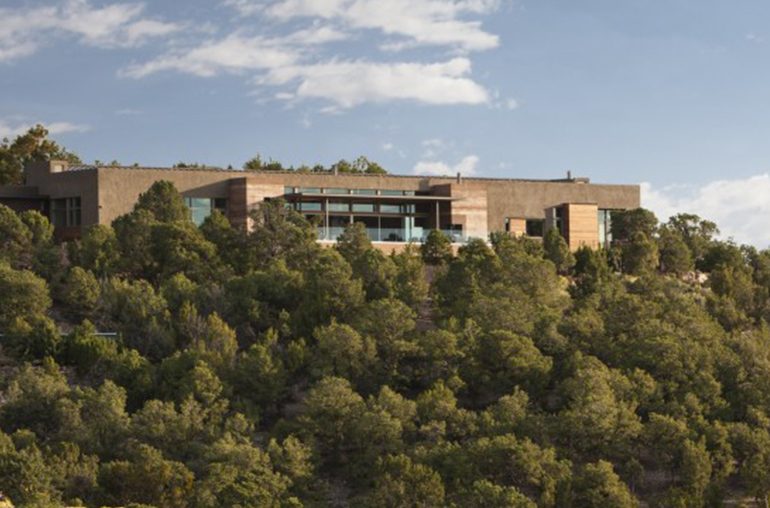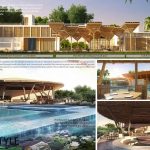First Award | Residential (Built)
Firm Name: Page
Participant Name: Rachelle Ray
Team Member: Rachelle Ray, Larry Speck, Justin Sabatini
Country : United States

The Torcasso Residence is inspired by the spectacular landscape of northern New Mexico and the prospect of living in nature in a way that creates a constant and memorable connection to the mountains, the sky, the air and the climate of this extraordinary place. The house lies long and low, hugging the contours of a steep hill just under its crest. Expansive views from its north face stretch to Espanola and Los Alamos twenty miles away and survey layers of mountain ranges beyond a broad valley. The south face of the house works with a 20-foot rock outcrop on the side of the hill to create a long, thin, sunny courtyard.
In the midsection of the house, two rammed earth volumes delimit the public spaces and frame 60-foot apertures that link the living/dining/kitchen area to the broad view on one side and to the contained courtyard on the other. The rammed earth walls incorporate four different shades of indigenous soil, creating a deep luscious palette in irregular sedimentary layers. They are much the same soils and hues found in nearby Abiquiu that inspired many of Georgia O’Keefe’s paintings.

Two full-height art volumes designed in collaboration with international artist Margo Sawyer subdivide the space between the rammed earth walls as well as incorporating a fireplace and storage units that define the living room, dining room and kitchen. Colors in the art pieces were drawn from colors in the landscape and sky of northern New Mexico.
Both interior and exterior walls of the more contained bedrooms, bathrooms and home office at the ends of the house are made of air-entrained concrete and work with the rammed earth to create extraordinary thermal performance for the house. In an alpine desert climate with high diurnal swing and a predominance of sunny days, the house’s high thermal mass along with radiant heated floors, carefully placed fenestration and seasonally responsive solar shades provides passive thermal stability for most of the year.
Rainwater collection from all constructed surfaces is stored in tanks below the deck to minimize runoff and is recycled for everyday water usage. A green roof planted with native grasses not only serves to lessen the impact of the house on the local ecosystem, but also helps to reduce the visual impact of the roof from the view of neighbors and hikers up the hill. A large (but carefully concealed) photovoltaic array is tied into an advanced home automation system that continuously monitors the energy production and consumption for maximum efficiency.

Minimal disruption of both contours and vegetation during construction are other examples of how respect for natural forces and a sustainable ethic permeated all aspects of design for the house. Aside from the south courtyard and the verges of the drive, the large site was left substantially in its native condition.
After more than a year of living in the house, the clients have reported very minimal energy consumption and enjoy how in-tune the house is to their everyday needs and the surrounding landscape.







